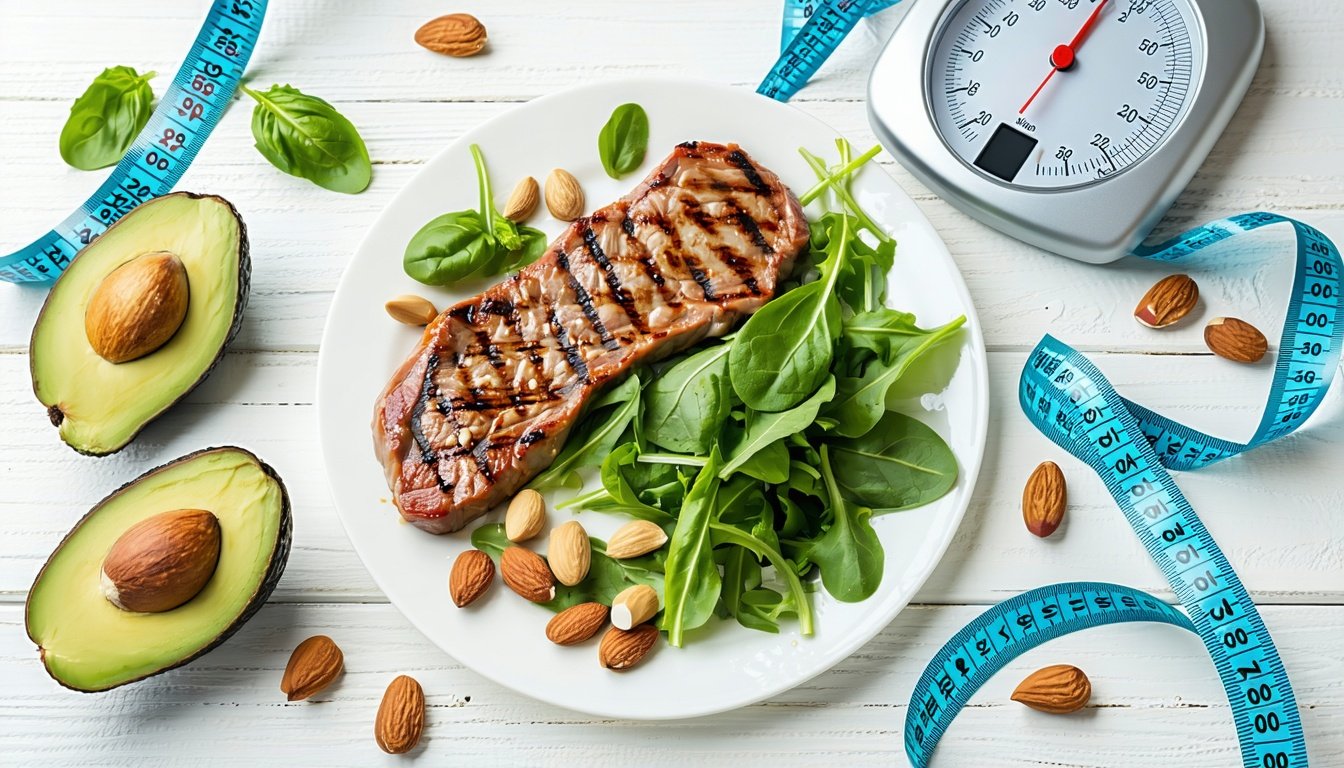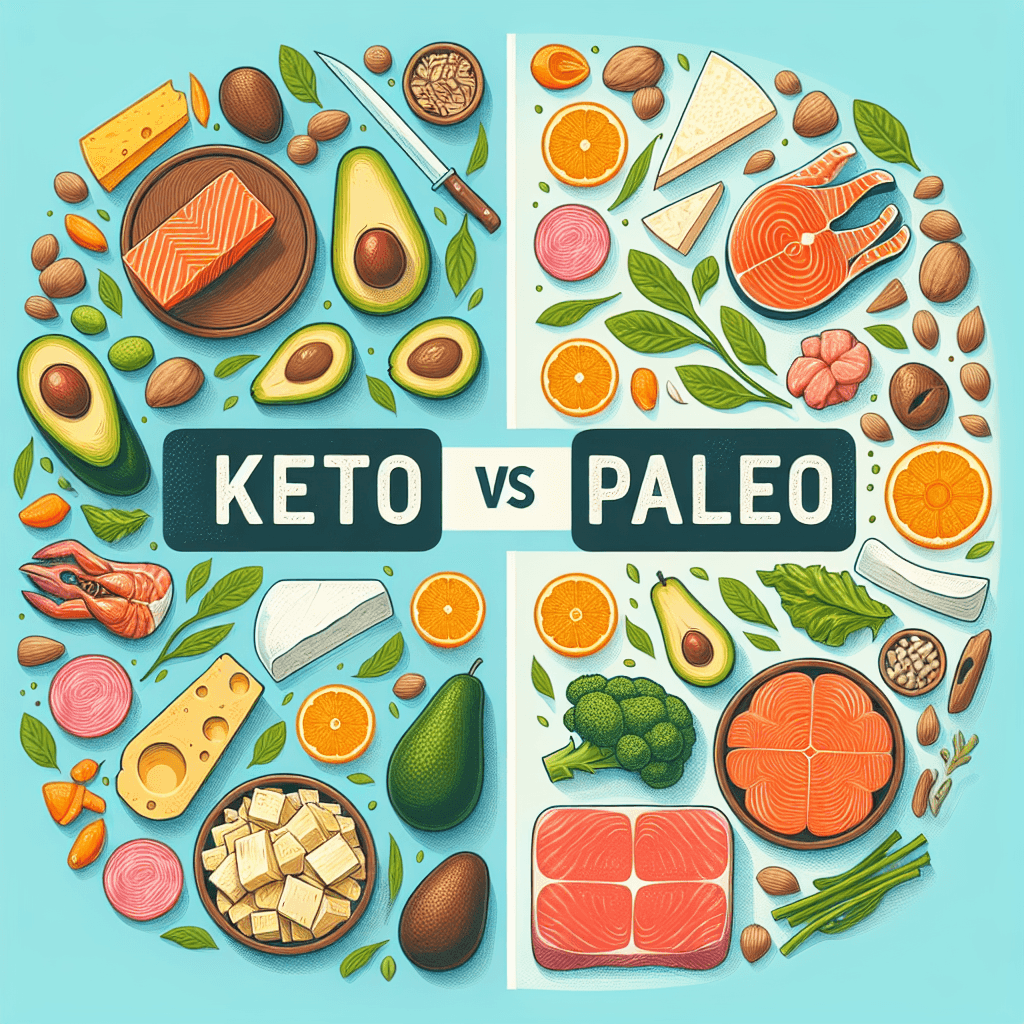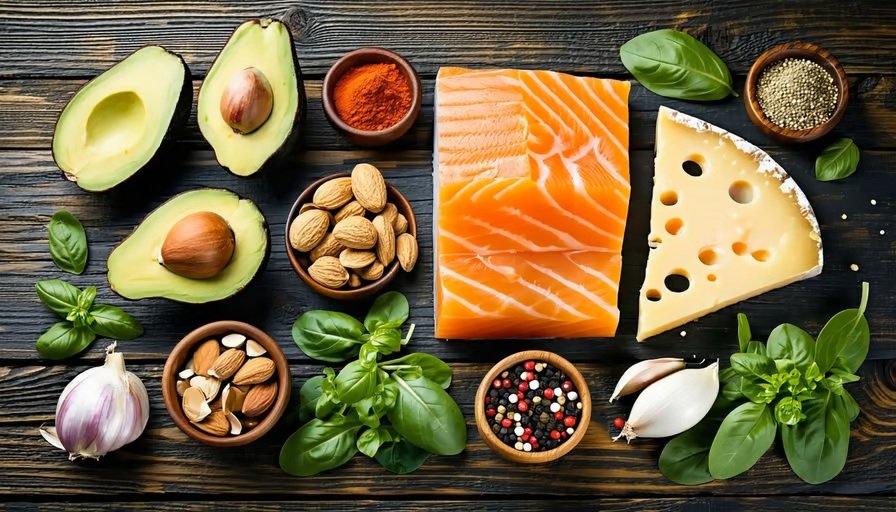Introduction to Keto Diet Weight Loss
What is the Keto Diet?
The keto diet, or ketogenic diet, is a low-carb, high-fat eating plan designed to shift the body’s metabolism away from carbohydrates and towards fats. This transition leads to a state known as ketosis, where the body becomes highly efficient at burning fat for energy. Typically, the diet consists of a significant reduction in carbohydrate intake, which is replaced predominantly with fat, alongside a moderate amount of protein.
Individuals following the keto plan often find themselves consuming foods rich in healthy fats, such as avocados, nuts, and oils, while minimizing carbohydrates found in grains, fruits, and sugars. The goal is to signal the body to burn fat, leading to potential weight loss.
Key Goals of the Keto Diet
The keto diet aims for several key objectives, primarily focusing on weight management and overall health improvement. Below are some of the main goals associated with adopting this dietary approach:
| Goal | Description |
|---|---|
| Weight Loss | Promote fat burning and reduce overall body weight. |
| Increased Energy Levels | Shift from glucose to fat as the primary energy source for sustained energy. |
| Reduced Hunger and Cravings | Lower insulin levels help manage appetite and minimize cravings for carbs. |
| Enhanced Mental Focus | Some individuals report improved clarity and focus while in ketosis. |
Those who are health-conscious, especially beginners exploring the keto diet, can benefit from understanding these goals. For more insights and resources, including a comprehensive keto diet for beginners and a detailed ketogenic meal plan, they may find the journey smoother and more enjoyable.
The Good of Keto Diet Weight Loss
The keto diet has gained popularity for several compelling reasons. Here are some of the most notable benefits that appeal to health-conscious individuals exploring this diet.
Rapid Weight Loss
One of the most immediate results of starting the keto diet is rapid weight loss. When the body enters a state of ketosis, it becomes efficient at burning fat for fuel instead of carbohydrates. This change in metabolism can lead to quick reductions in body weight, especially in the initial weeks.
| Week | Average Weight Loss (lbs) |
|---|---|
| 1 | 2-5 |
| 2 | 2-4 |
| 3 | 1-3 |
| 4 | 1-2 |
As indicated in the table, many individuals report significant weight loss within the first month. This rapid loss can be motivating and encourages individuals to stick with the new lifestyle.
Improved Energy Levels
Many people experience increased energy levels after transitioning to the keto diet. Once the body adapts to using fat as its main source of energy, users often report feeling more energetic and productive throughout the day. This transition can help overcome the sluggish feeling that can result from a high-carb diet.
For those interested in maintaining high energy while following a ketogenic lifestyle, incorporating foods like avocados, nuts, and leafy greens can be beneficial. These foods are not only low in carbs but are also rich in healthy fats that fuel the body effectively. For a guide on suitable foods, check out our article on keto diet foods.
Reduced Cravings
The keto diet tends to reduce cravings, making it easier for individuals to stick to their meal plans. By limiting carbohydrate intake, the body stabilizes blood sugar levels, which can drastically decrease the urge to snack throughout the day.
In many cases, people find that they are less prone to feelings of hunger, which aids in portion control and can ultimately lead to successful weight loss. For a great selection of indulgent yet compliant options, consider exploring keto diet desserts.
Overall, the positive aspects of keto diet weight loss can be quite appealing for those starting their journey. With rapid weight loss, improved energy levels, and fewer cravings, many find it easier to adopt this low-carb lifestyle and stick to it over the long term.
The Bad of Keto Diet Weight Loss
While the keto diet can offer significant benefits, there are also downsides that health-conscious individuals should consider when embarking on this journey.
Keto Flu
As the body transitions into ketosis—a state where it burns fat for fuel instead of carbohydrates—many newcomers may experience the so-called “keto flu.” This temporary condition can occur within the first week of adopting a low-carb lifestyle. Symptoms often include headaches, fatigue, nausea, irritability, and dizziness. These side effects can be discouraging for those looking to achieve effective keto diet weight loss.
| Symptom | Duration |
|---|---|
| Headaches | 1-3 days |
| Fatigue | 1 week |
| Nausea | 1-5 days |
| Dizziness | 3-7 days |
Potential Nutrient Deficiencies
Another concern with the keto diet is the potential for nutrient deficiencies. Since this eating plan restricts various food groups, individuals may miss out on essential vitamins and minerals, particularly when they first start the diet. Common nutrients that may be lacking include:
| Nutrient | Foods Rich In | Potential Impact |
|---|---|---|
| Magnesium | Nuts, leafy greens | Muscle cramps, fatigue |
| Potassium | Avocados, spinach | Weakness, muscle cramps |
| Vitamin C | Citrus fruits | Weakened immune system |
| Fiber | Whole grains | Digestive issues |
To mitigate deficiencies, planning balanced meals is essential. For meal inspiration, check out our ketogenic meal plan.
Social Challenges
Adopting a keto lifestyle can sometimes create social challenges. Many social gatherings and events feature foods that aren’t keto-friendly, making it difficult for individuals trying to stick to their dietary goals. This can lead to feelings of isolation or pressure to deviate from the diet.
Navigating these situations requires preparation. Bringing keto-friendly dishes to share at gatherings can be a great way to ensure there are options available. Learning about keto diet foods can also make it easier to fit in while sticking to dietary choices.
When starting any new diet, especially one as distinctive as keto, it’s important to consider both the positive aspects and the challenges that may arise. Understanding these elements can make for a smoother transition into a healthier lifestyle.
Delicious Keto-Friendly Foods
Eating delicious foods while on the keto diet can be both satisfying and nutritious. Here are some categories of foods that align with the keto lifestyle, perfect for anyone focusing on keto diet weight loss.
Low-Carb Vegetables
Low-carb vegetables are essential in the keto diet, providing vital nutrients without excess carbohydrates. These veggies are typically high in fiber and low in calories, making them the perfect addition to any meal.
| Vegetable | Net Carbs (per 100g) |
|---|---|
| Spinach | 1.4g |
| Kale | 1.5g |
| Zucchini | 2.1g |
| Cauliflower | 2g |
| Broccoli | 4g |
| Bell Peppers | 4.7g |
Incorporating these vegetables into meals can help maintain energy levels while adhering to a low-carb intake. They can be eaten raw, steamed, or sautéed for added flavor.
Healthy Fats
Healthy fats form the backbone of the keto diet, providing energy and promoting satiety. Here are some excellent sources of fats that are keto-friendly:
| Fat Source | Type of Fat | Health Benefits |
|---|---|---|
| Avocado | Monounsaturated | Heart health, fiber |
| Olive Oil | Monounsaturated | Antioxidants |
| Coconut Oil | Saturated | Supports metabolism |
| Nuts (e.g., almonds) | Monounsaturated | Nutrient-rich |
| Seeds (e.g., chia) | Polyunsaturated | High in omega-3s |
Using these healthy fats in cooking or as toppings can enhance flavor and provide steady energy throughout the day. For dessert options, consider exploring our article on keto diet desserts.
Protein Sources
Protein is crucial in the keto diet, aiding muscle maintenance and repair while keeping hunger at bay. Here are some protein sources that fit well within a ketogenic lifestyle:
| Protein Source | Protein (per 100g) | Carbs (per 100g) |
|---|---|---|
| Chicken (breast) | 31g | 0g |
| Beef (ground) | 26g | 0g |
| Fish (salmon) | 25g | 0g |
| Eggs | 13g | 1g |
| Tofu | 8g | 1.9g |
Adding these protein sources into meals can ensure that they remain filling and satisfying, which is key for anyone on the keto diet. For those just starting, our guide on keto diet for beginners offers helpful insights into meal planning and food choices.
By concentrating on these delicious, keto-friendly foods, one can navigate their weight loss journey while enjoying a variety of flavors and nutrients.
Tips for Successful Keto Diet Weight Loss
Starting a keto diet can be an exciting journey, but it also comes with its own set of challenges. Here are some helpful tips to ensure success while losing weight and boosting energy levels on this low-carb lifestyle.
Tracking Macros
When following the keto diet, keeping an eye on macronutrients—fat, protein, and carbohydrates—is crucial. Tracking these macros helps individuals stay within their target ratios, typically aiming for about 70-75% of calories from fat, 20-25% from protein, and only 5-10% from carbohydrates.
| Macronutrient | Percentage of Daily Intake |
|---|---|
| Fats | 70-75% |
| Protein | 20-25% |
| Carbohydrates | 5-10% |
Many apps and online tools can assist with tracking macros, making the process easier for beginners. Understanding how to read food labels and calculating portion sizes is also beneficial. For a starting point, check out our article on the keto diet for beginners.
Staying Hydrated
Proper hydration is vital for anyone on the keto diet, especially since the body expels more water during the initial stages of ketosis. Drinking adequate fluids helps reduce symptoms of the “keto flu,” aids digestion, and supports overall health.
It is recommended to consume around 8-10 cups of water daily, adjusting according to individual activity levels and climate. Including electrolytes, such as sodium, potassium, and magnesium, is also important, as they can be depleted quickly on a low-carb diet.
To help with hydration, individuals may consider:
- Drinking herbal teas
- Adding electrolyte supplements
- Including broths in their diet
Incorporating Exercise
Regular physical activity complements the keto diet effectively. Although some individuals may feel fatigued at first, incorporating exercise can help enhance mood, increase energy levels, and support weight loss efforts.
Moderate exercises like walking, cycling, or yoga are great for beginners. As stamina improves, individuals can consider adding strength training or more intense cardio workouts.
| Exercise Type | Frequency |
|---|---|
| Aerobic (Walking, Cycling) | 3-4 times a week |
| Strength Training | 2-3 times a week |
| Flexibility (Yoga, Stretching) | 2-3 times a week |
Staying consistent with exercise can help maintain motivation and establish healthy habits long-term.
By effectively managing macronutrients, prioritizing hydration, and incorporating regular physical activity, individuals can optimize their keto diet weight loss journey. For delicious meal ideas, check out our articles on keto diet foods and keto diet desserts.
Common Myths About Keto Diet Weight Loss
Understanding the truth behind common misconceptions can greatly enhance one’s experience on the keto journey. Here are three prevalent myths regarding keto diet weight loss.
All Fats Are Equal
A widespread belief is that all fats are created equal, leading some to think they can consume any type of fat on the keto diet. In reality, fats vary significantly in quality and nutritional value. Healthy fats, such as those found in avocados, nuts, and olive oil, can support overall health and weight loss. In contrast, unhealthy fats from processed foods can hinder progress and negatively impact health.
| Type of Fat | Sources | Nutritional Benefits |
|---|---|---|
| Healthy Fats | Avocados, Nuts, Olive Oil | Supports heart health and provides essential fatty acids |
| Unhealthy Fats | Processed Snacks, Fried Foods | May lead to health issues and hinder weight loss |
Choosing the right fats is crucial for achieving successful keto diet weight loss. For a comprehensive list of keto-friendly options, refer to our article on keto diet foods.
Keto Diet Is Unsustainable
Another myth is that the keto diet is hard to maintain over the long term. While it may require an adjustment period initially, many individuals find it easier to stick to once they enter ketosis. The increase in energy and reduction in cravings often lead to a more enjoyable eating experience.
Maintaining a varied and enjoyable menu with delicious keto-friendly recipes can help individuals stay on track. Exploring delicious options like keto diet desserts can add excitement to the meals.
You Can’t Eat Vegetables
A common misconception is that vegetables are off-limits on the keto diet due to their carbohydrate content. In truth, many low-carb vegetables are not only permitted but encouraged, as they provide essential vitamins, minerals, and fiber. Non-starchy vegetables such as spinach, broccoli, and zucchini are great options for anyone on a ketogenic meal plan.
| Low-Carb Vegetables | Carbohydrates per 100g |
|---|---|
| Spinach | 1.4g |
| Broccoli | 6.6g |
| Zucchini | 3.1g |
Incorporating these nutritious vegetables into meals can enhance the health benefits of a keto diet. For beginners looking for guidance, our article on keto diet for beginners offers helpful tips and resources.
Setting the record straight about these myths can lead to a more informed and enjoyable keto experience, paving the way for successful keto diet weight loss.
🛒 Recommended Keto Products
- NutriBullet Blender: Great for smoothies
- Avocado Oil: Keto-friendly cooking staple
- Organic Chia Seeds: Perfect for puddings and fiber
- 30-Day Keto Plan: Weekly recipes & shopping lists
- Sugar-Free, Gluten-Free Electrolyte Supplement: Avoid keto flu symptoms
Tools to Stay on Track
- 7-Day Meal Plan: Easy keto recipes
- Watch: How to Use a Ketone Meter
- Blood Ketone Meter: KetoSens




